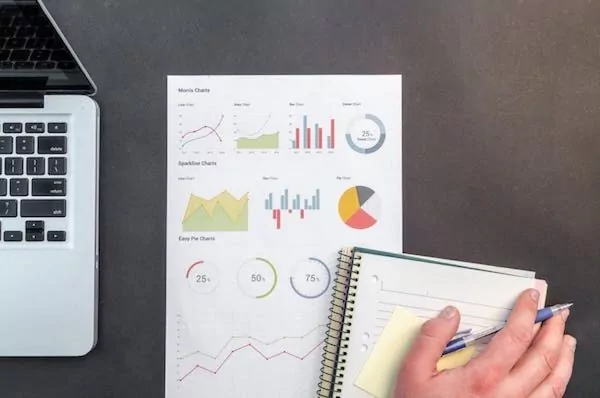7 Best Data Visualization Tools You Need to Know About

Once lauded as a coming trend, big data is quickly becoming overwhelming for some businesses. According to the IDC, the total amount of digital data created worldwide will hit 163 zettabytes by 2025. Knowing how to parse these growing amounts of data is hard for many businesses, and the resulting information overload makes decision-making difficult. That’s where data visualization tools come in.
Embedded analytics allow businesses to process and analyze their information, making it easier to react intelligently and craft strategies that work.
But which tools have the capabilities to make a difference? Here are the names you need to know.
1. Tableau Desktop
Tableau Desktop is one of the most popular tools known for its steep learning curve. Its expansive features offer tremendous diversity of data connectors and visualizations.
Boasting an impressive processing engine, Tableau comes in several versions and connects to any data source that is structured or SQL-based.
2. Microsoft Power BI
This powerful platform offers many data source connectors and can be surprisingly user-friendly for newcomers to the BI world.
With stunning data visualization capabilities, Power BI can also tackle any structured or SQL-based databases. However, users of unstructured data may have added difficulty in more complicated use cases.
3. TimelineJS
Designed to map events as they occur in time, this option is a great way for businesses to demonstrate patterns woven through relevant issues and events.
The timeline-based visuals are easy to use and support media formats like Google Map data, Wikipedia articles, and YouTube videos.
4. Google Charts
It’s no surprise that Google, as a global powerhouse, offers its tools for data analytics and visualization with a range of visual outputs. They’re also as powerful as you’d expect.
However, there’s a surprising learning curve for the usually easy line of Google products. Beginners may need to code to make the most of the toolset, but the supporting documentation is robust. This option is excellent for working with geolocation data.
5. Knowi
Launched in 2015, this powerful augmented analytics platform offers all the workings of traditional BI tools. Knowi differentiates itself by integrating with third-party data sources that span from structured to unstructured data. It also boasts the ability to connect natively to NoSQL databases.
The brand’s embedded analytics are designed to help businesses reduce time to market with clean and intuitive tools.
6. Plotly
Wonderful for any business needing data journalism strategies, Plotly is designed for use directly within your browser window. Its chart tools are intuitive and clean, offering robust features for a free product, though some helpful features and chart types are only offered to subscribers.
7. Sisense
Appealing to more seasoned BI users, Sisense offers a full range of comprehensive data analytics features. With a simple drag-and-drop interface, novice users can get started with the creation of both complex analysis and interactive graphics to showcase their data.
Getting Started With Data Visualization Tools
Businesses worldwide rely on data visualization tools to make critical decisions about their campaigns and overall strategies—so it’s crucial to pick the right one. The above tools can help showcase your data within your company and external audiences for more engaging content.
If you’re interested in more technology and business guides to give you a leg up, check out our other posts for more detailed tips!

